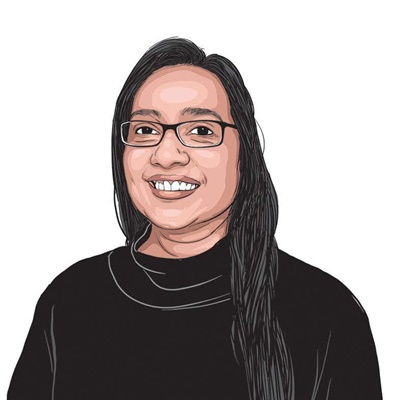Opinion Shades of greys and browns
Things haven’t changed regarding society’s standards on female beauty, though the welcome change is women’s attitude towards it
 As someone who was duskier than almost all my cousins and peers during adolescence, my wardrobe was limited to shades of greys and browns. (Representational Image)
As someone who was duskier than almost all my cousins and peers during adolescence, my wardrobe was limited to shades of greys and browns. (Representational Image) What do these three girls — one who grew up in a small town, another in a cosmopolitan city and the third in a bustling megapolis — have in common? Their vulnerability to bullies who dented their confidence with uninvited comments on their looks, size, colour or even the alignment of their teeth.
A friend recently shared her apprehension about wearing sleeveless tops — a misgiving that I too had until recently. She was brought up in a city, while I was raised in a small town. But we shared the same hesitation about our body. I was a tad surprised. For me, until then, city girls always brimmed with confidence.
As someone who was duskier than almost all my cousins and peers during adolescence, my wardrobe was limited to shades of greys and browns. When I wore a pink kurta, they said they saw a “kurta walking on the road”; when I wore an orange top, someone said I looked “like a tar can on fire”; when I wore a red sari, they said the sari was beautiful but it “did not suit me at all”. So I chose colours that would gel with my skin, so that I could stay invisible.
I remember crying my heart out as a six-year-old, when a neighbourhood uncle taunted me saying my parents had “bought” me from a woman who came to sell fish and a baby. He told me that my brother was their real child. “Just look at your colour and his,” he taunted.
At an age when we allow others’ opinions to rule our minds, these comments hurt a lot. And slowly, I withdrew into my shell of greys and browns. For years I wore long-sleeved tops, since I thought my arms were “too dark and thin”. I pinned my dupatta high up to hide my chest, which, I was told, “was too flat”. I always covered my laughter to hide my “vampire” teeth. During my early teens, I was even asked, “Do you smoke? Your lips are too dark.”
As a teenager, I would secretly apply Fair & Lovely in the hope that I would soon be flooring everyone with my charm, just like the model in the advertisement did. In a desperate attempt to bring them to a Colgate alignment, I spent a huge chunk of my first few salaries on an orthodontic procedure to rein in my vampire teeth.
I was so under-confident that in my early 20s, when someone told me my smile was beautiful, I thought the person was actually making fun of me. Though it took years of battling the demons inside and outside, I finally tasted success. Various cities where I worked gave me the immunity of anonymity that helped me grow and evolve to discover and respect myself. I started choosing colours or length of clothes based on my preference, not on what others dictated.
During my college days, probably dismayed at everyone commenting about her dark, skinny daughter, my mother was overprotective of my then-splendid hair. Whenever I expressed my wish to cut it short, she would say, “That’s all you have.” So I preserved it, telling myself, “That’s all I have.” Decades later, when I finally cut my hair short, I knew I had much more. When I disclosed this to my mother over telephone, to my surprise, she said, “I also want to cut my hair.” So it wasn’t just me — both of us realised that wasn’t all we had.
Things haven’t changed regarding society’s standards on female beauty, though the welcome change is women’s attitude towards it. I feel thrilled when girls debunk norms about their skin or shape and revel in everything that is theirs. More power to you, girls.
National Editor Shalini Langer curates the She Said Column






